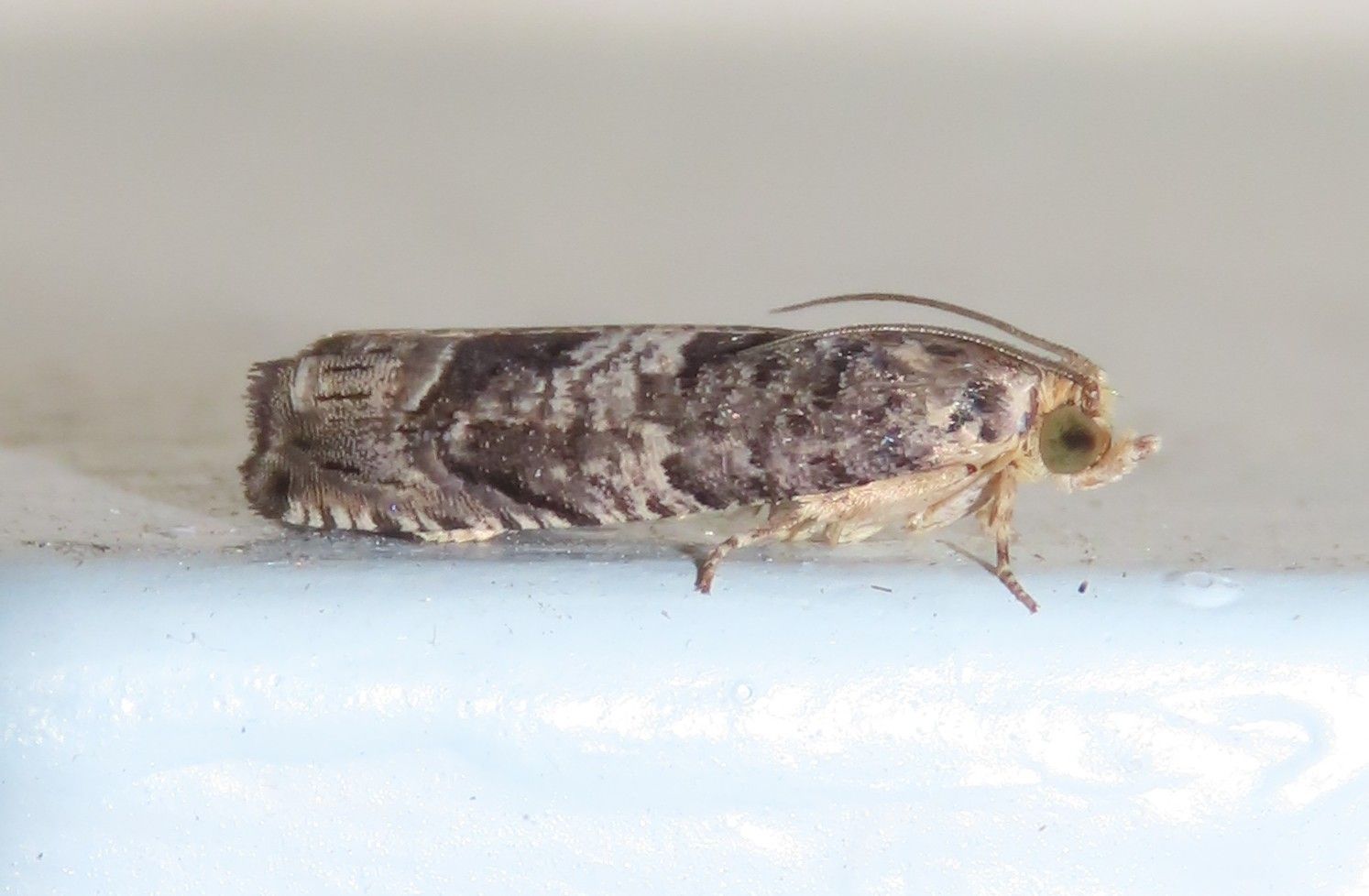

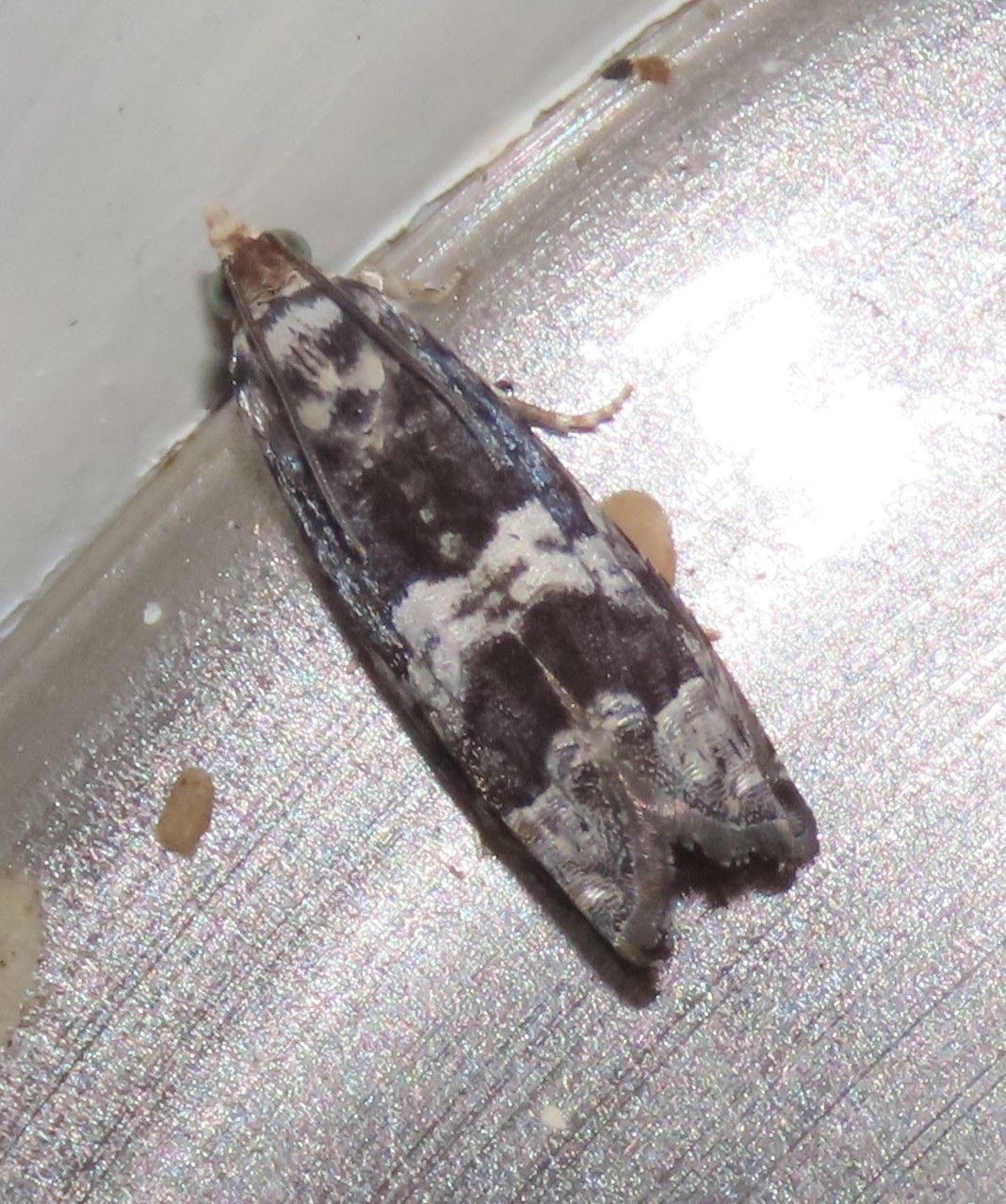
Member Moth (Cydia membrosa)
A small, tube-shaped moth, mottled blackish-brown overall with a noticeable whitish band in the mid section and ST area. Recorded July - October, most common in August.

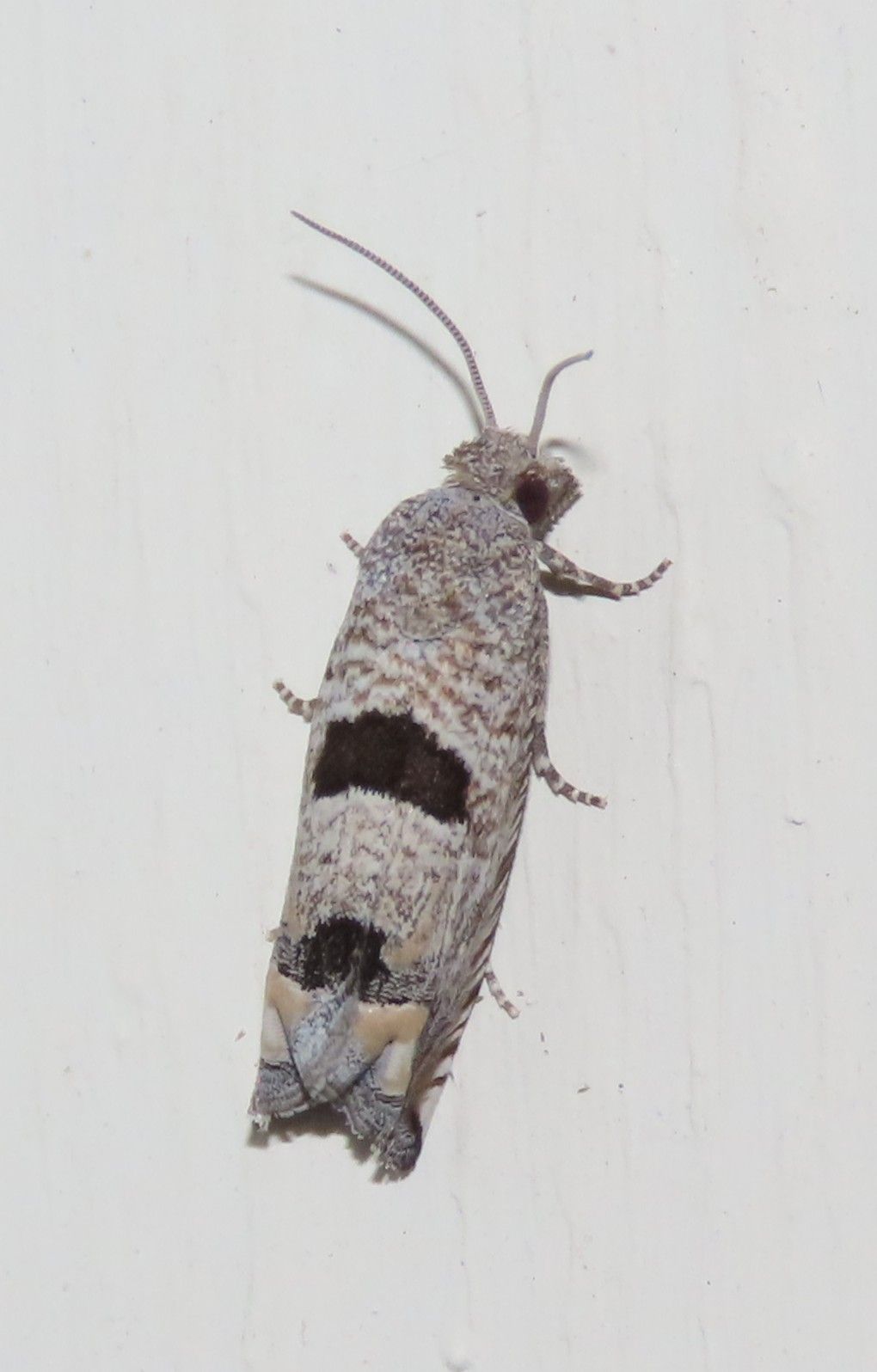

Sunflower Bud Moth (Suleima helianthana)
Pale and brindled overall, with a contrasting blackish crescent-shaped "saddle" and round spot abutting the whitish terminal area. Recorded mainly July - October, with records in March and December.
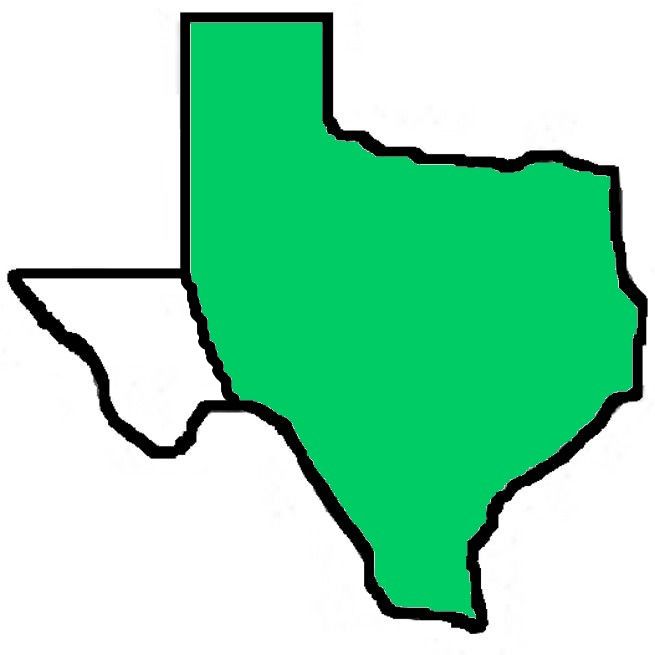
Pyralids
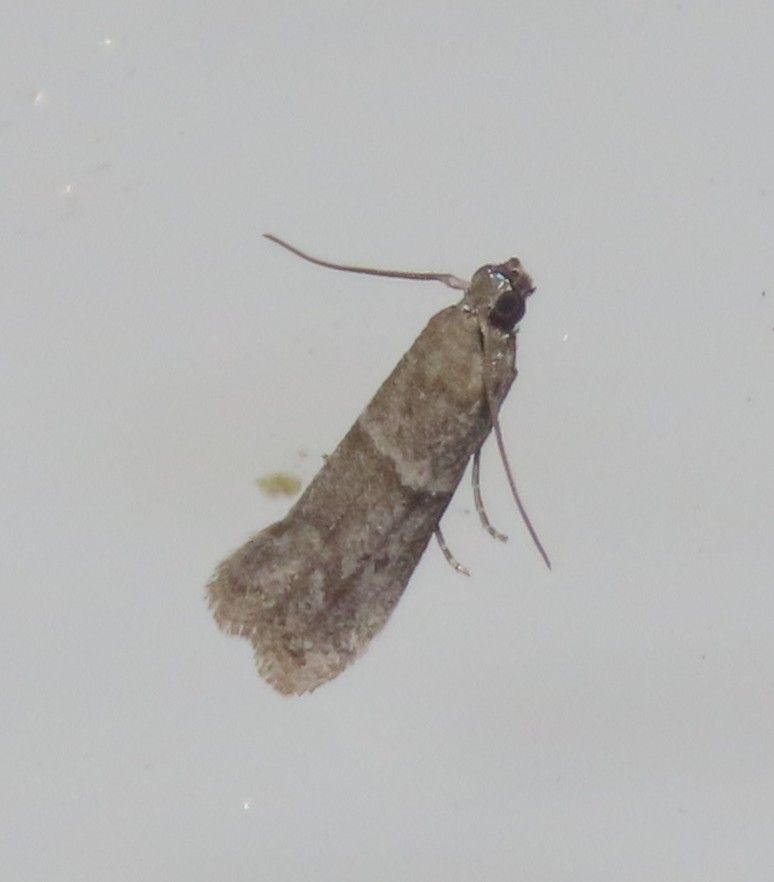
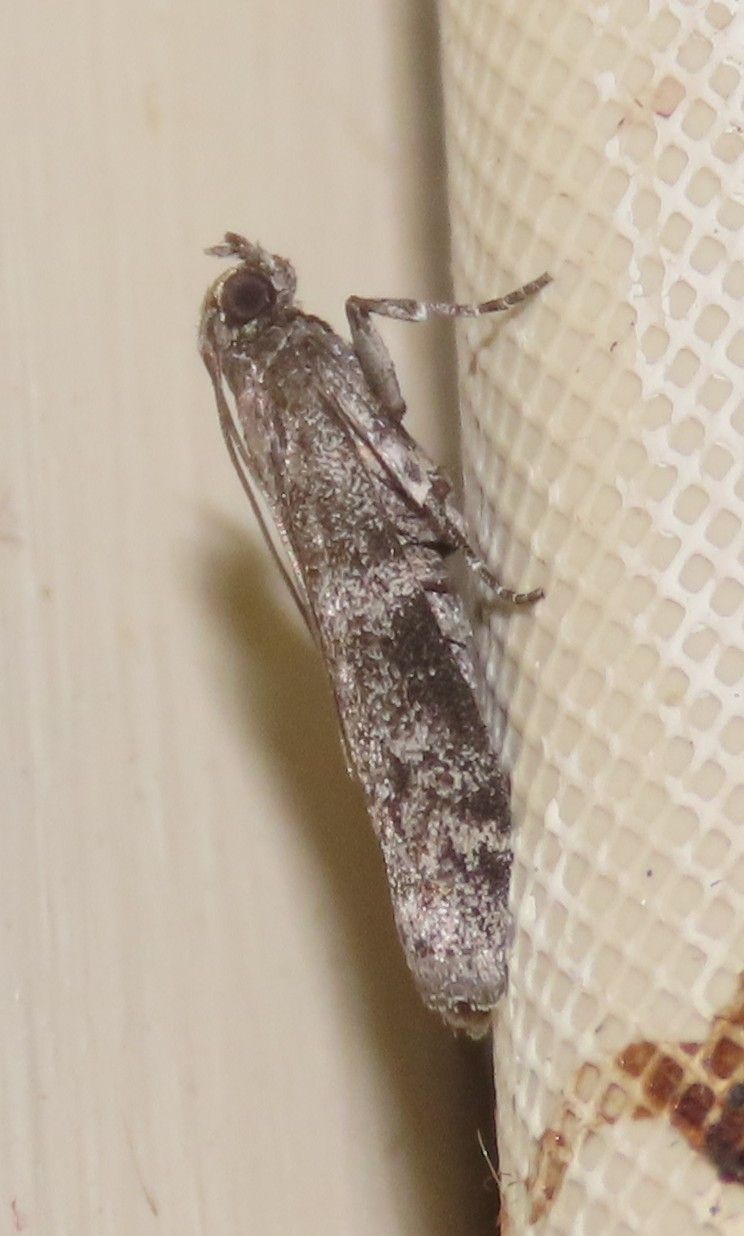
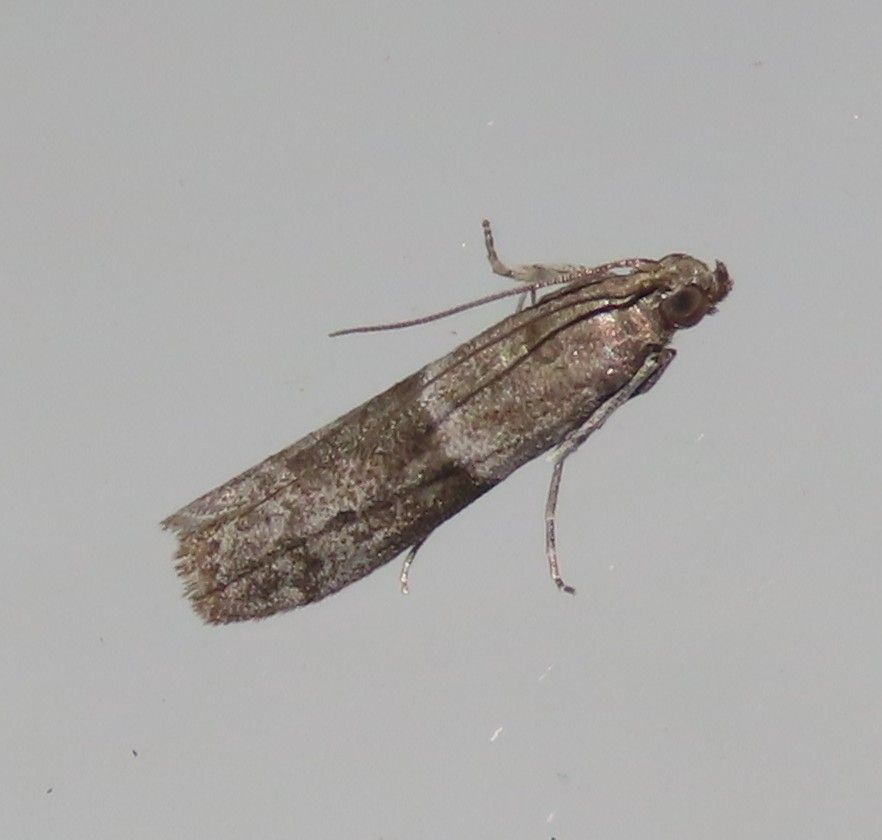
(Tentatively) Reddish Ephestiodes (Ephestiodes infimella)
The most intellectually honest thing to call these moths is simply Phycitini sp. as they're very difficult to pin down to species, but this particular pattern (gray with a narrow white median band bordered by a black band of varying thickness) is very common here. E. infimella seems to be the closest match and has been suggested by some.

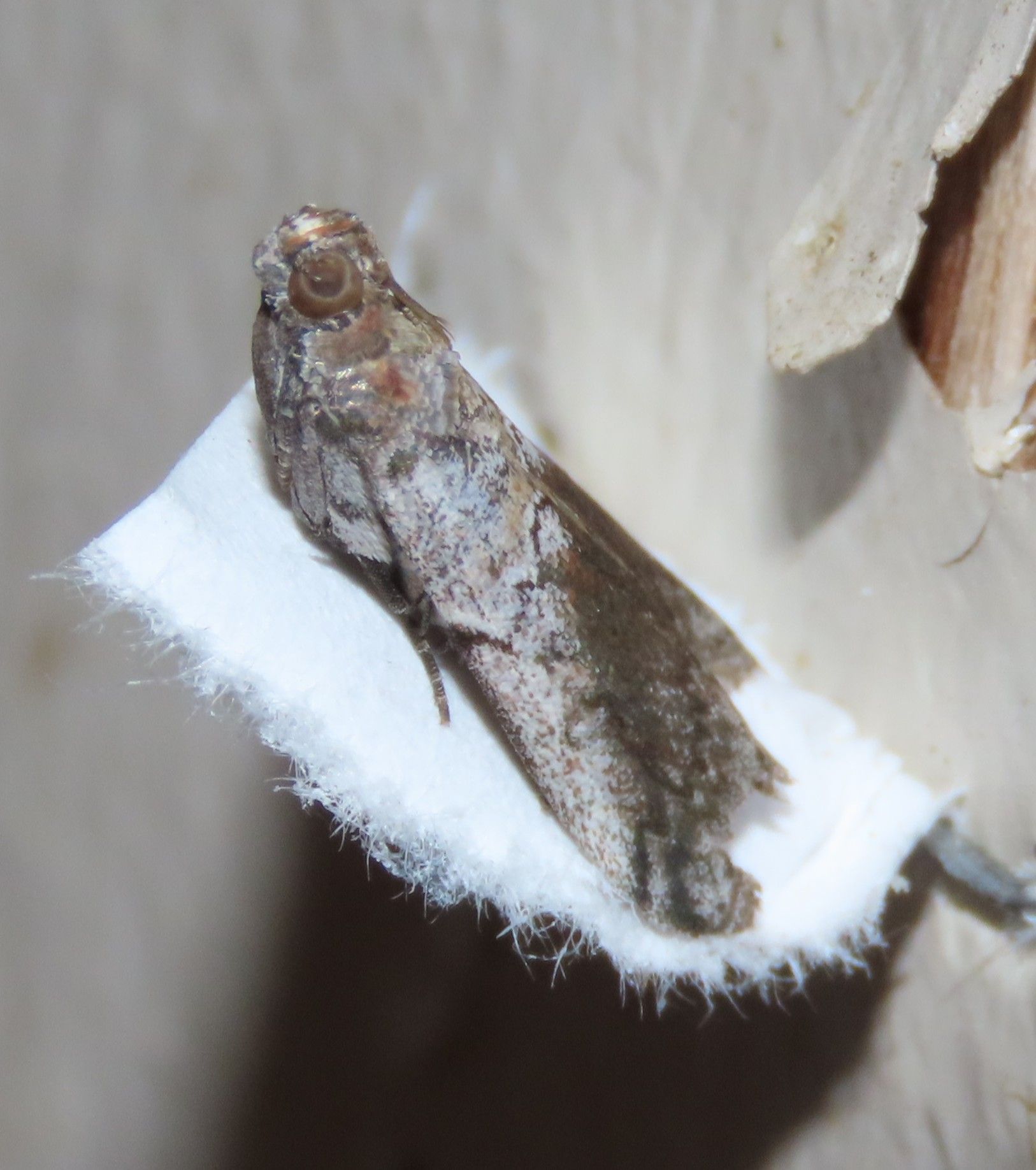
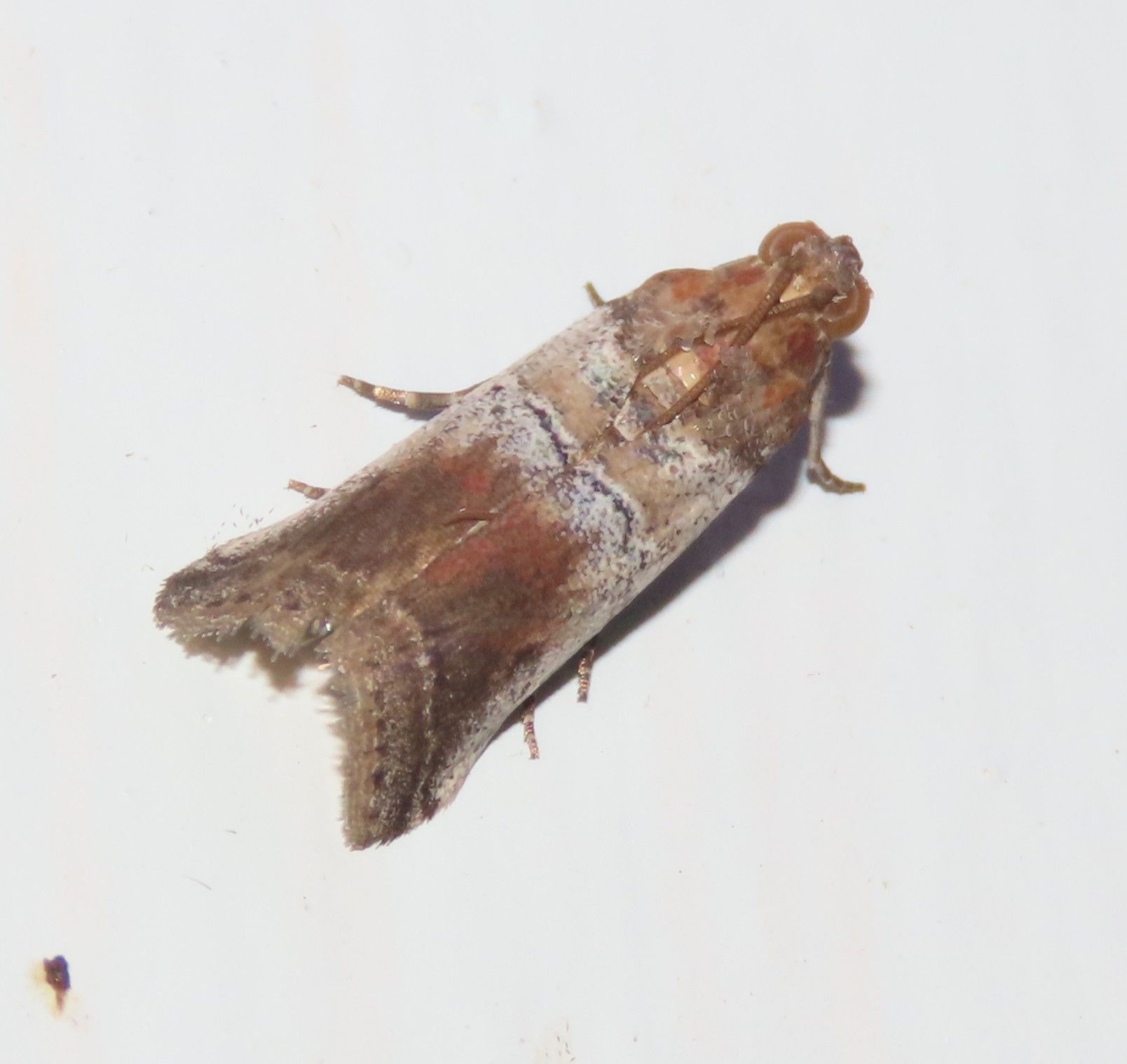
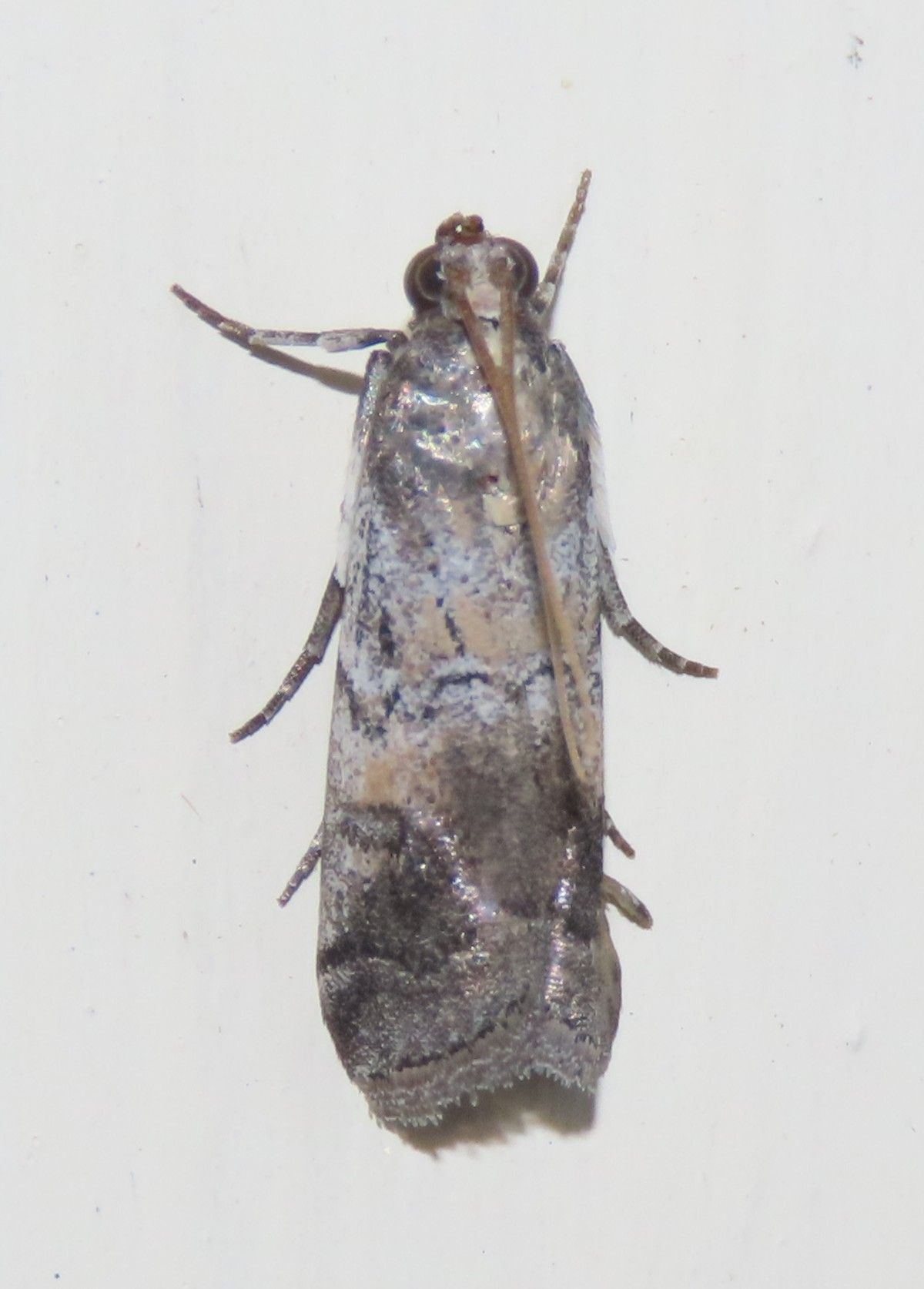
Hysterical Chararica (Chararica hystriculella)
Variable; rust or dark brown overall with an ochre-colored band across the middle, bordered by silver on top and black-and-silver on the bottom. The silvery coloration extends along the sides, and the hollow reniform spot is usually visible. Recorded March - October.
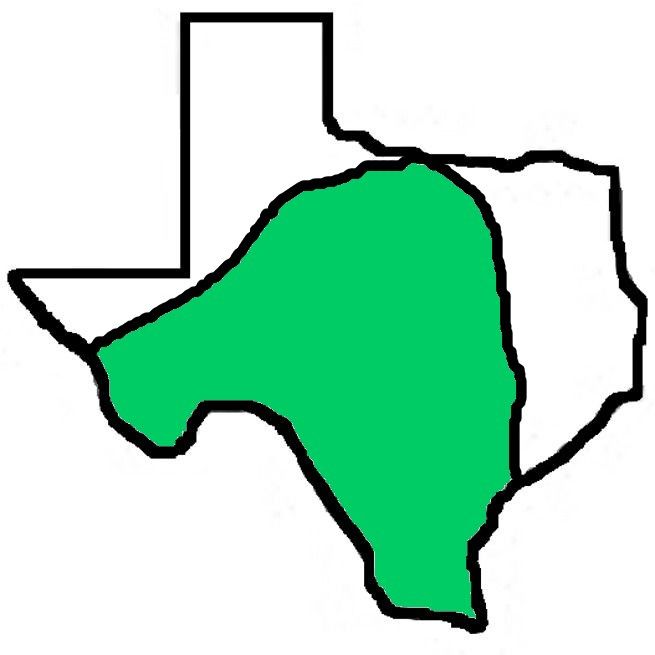
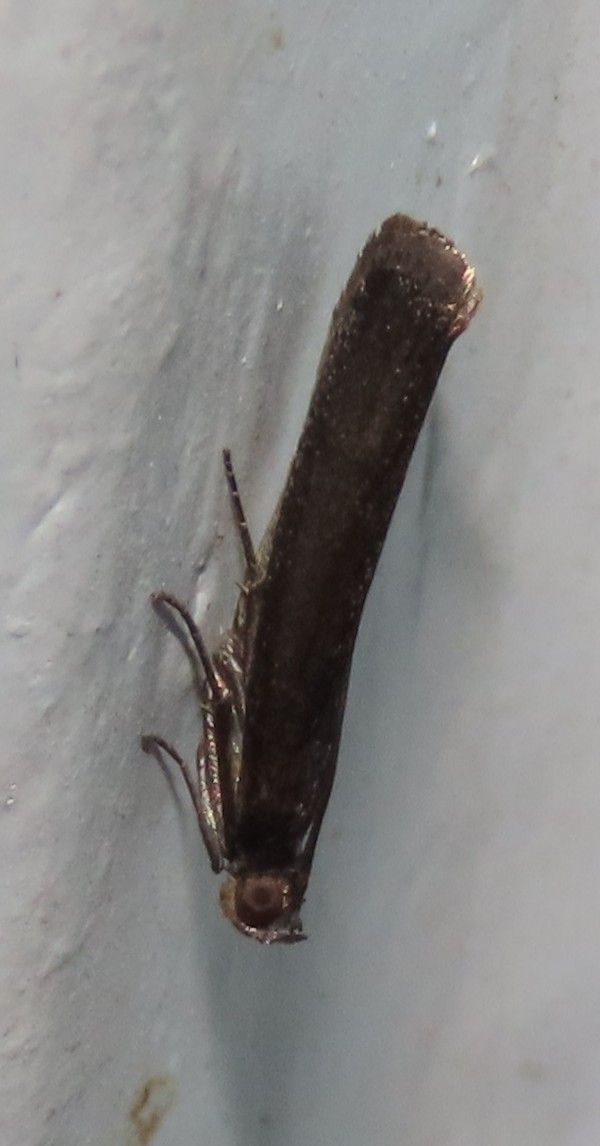
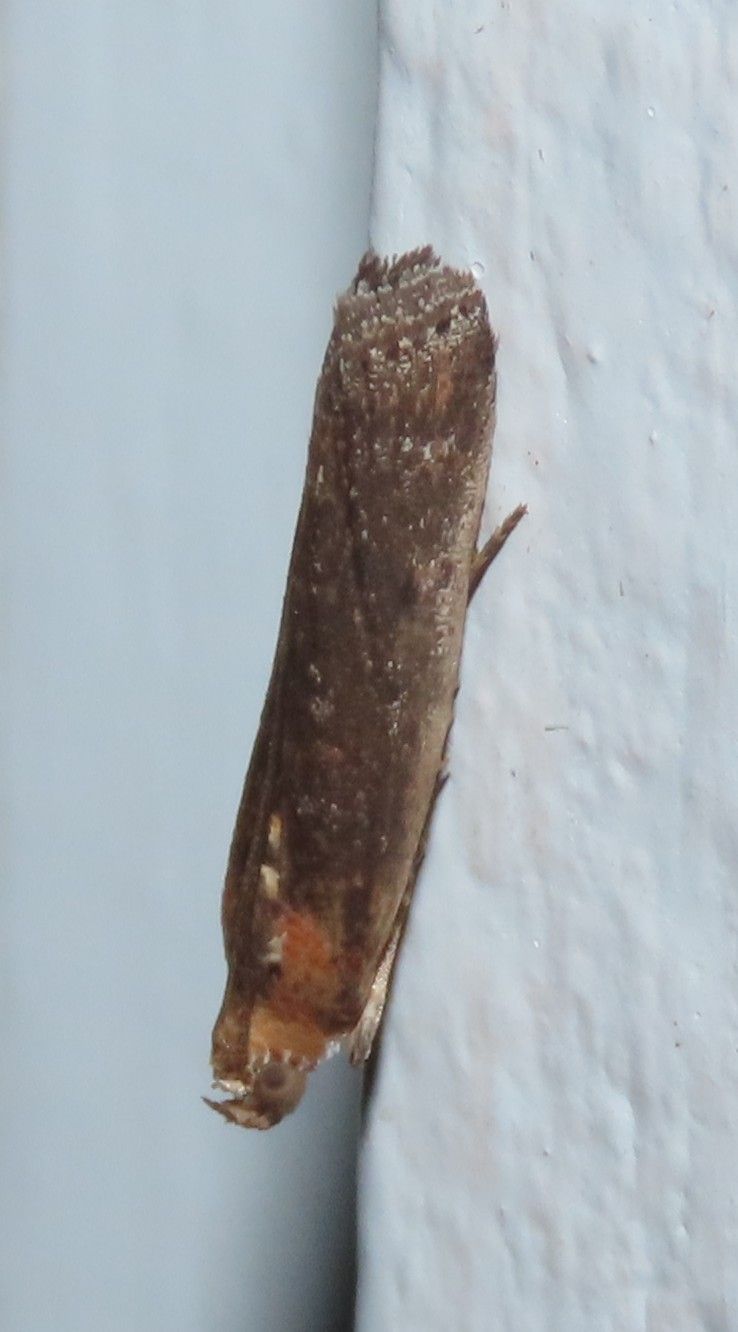
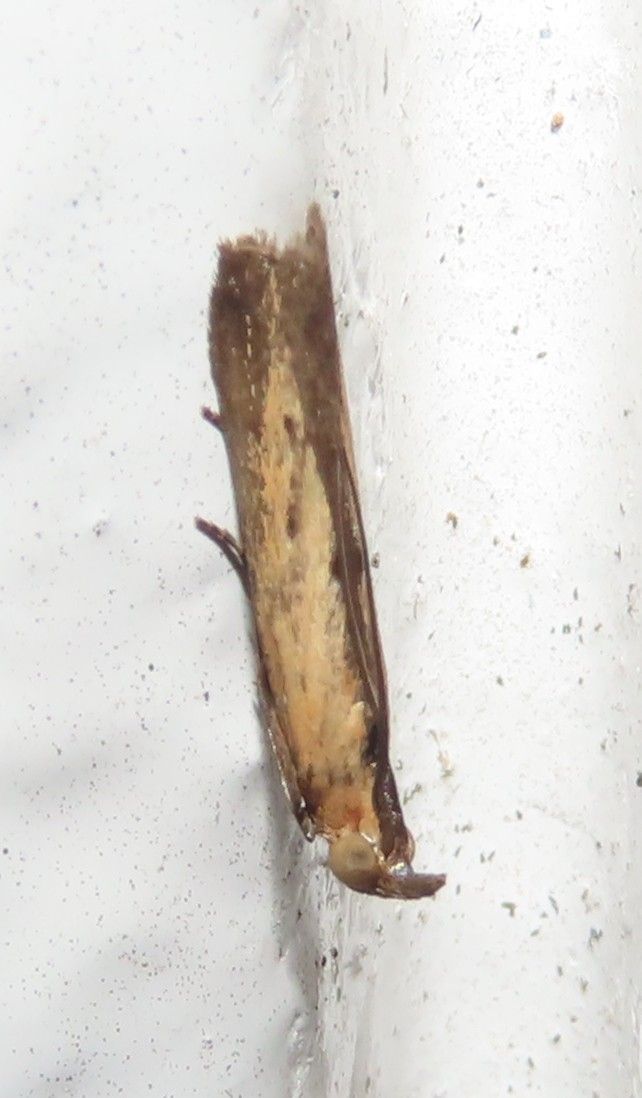
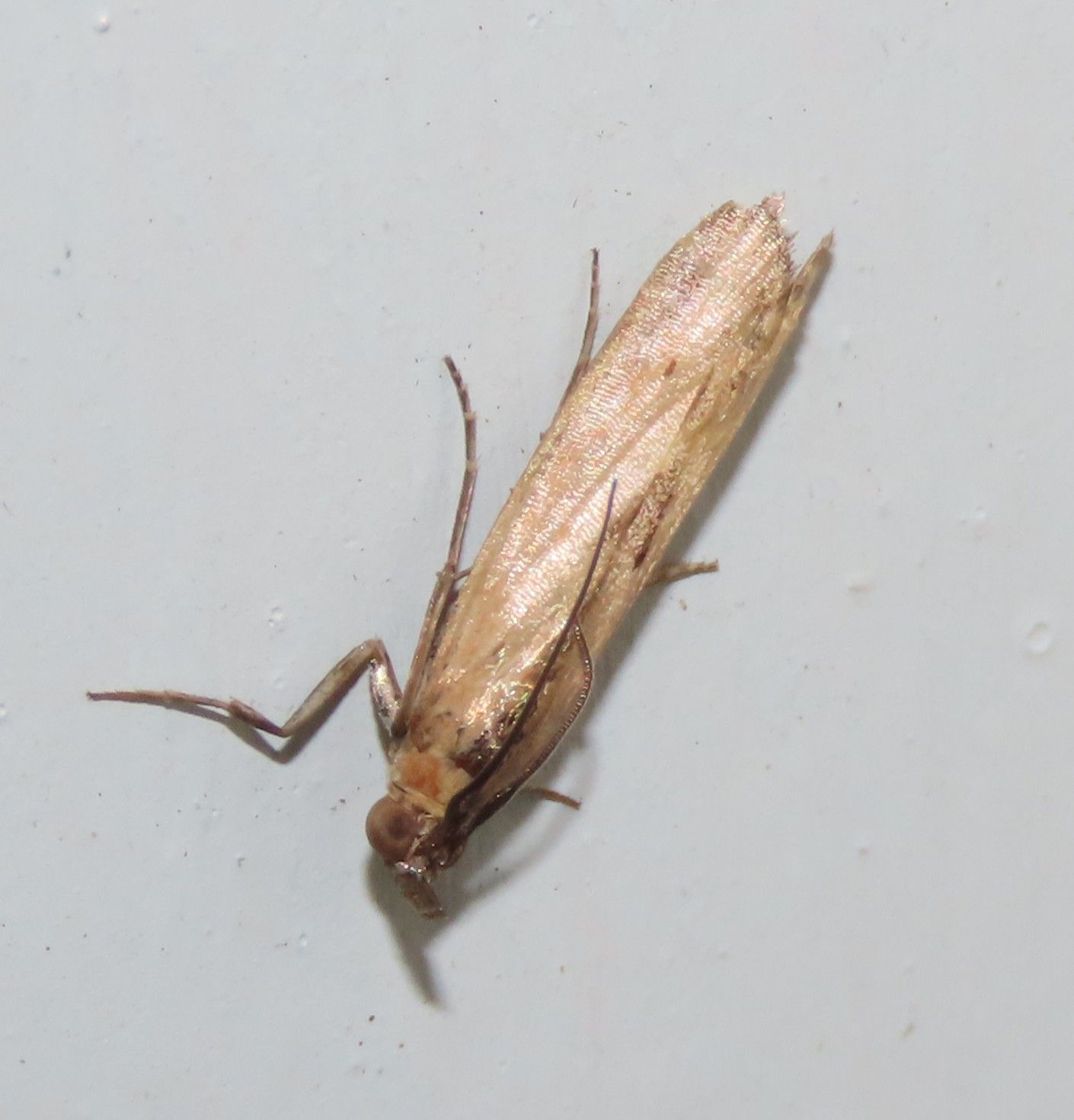
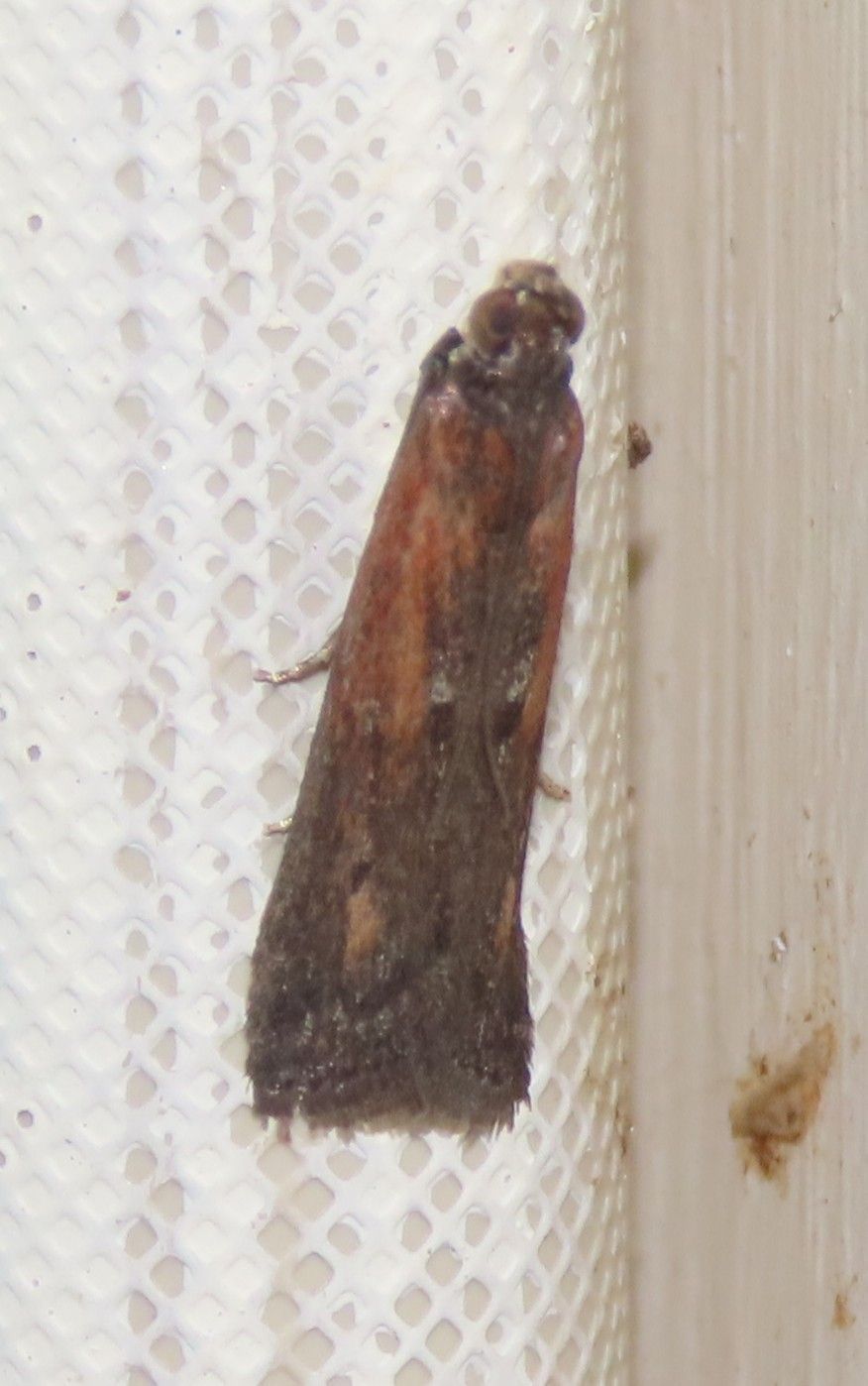
Lesser Cornstalk Borer (Elasmopalpus lignosella) - above and below
Extremely variable; a skinny tube-shaped moth that ranges in color from very dark (female) to light buff (male) and every combination therein! Females can show varying amount of rust, like the middle image above and the right hand image below (note also the "eyespots" on the back of the latter female, not always visible). Most males look like the bicolored individual in the upper right image, but some, like the lower left image, can be entirely buffy. The upturned palps is also a good clue to identification. Recorded July - January.
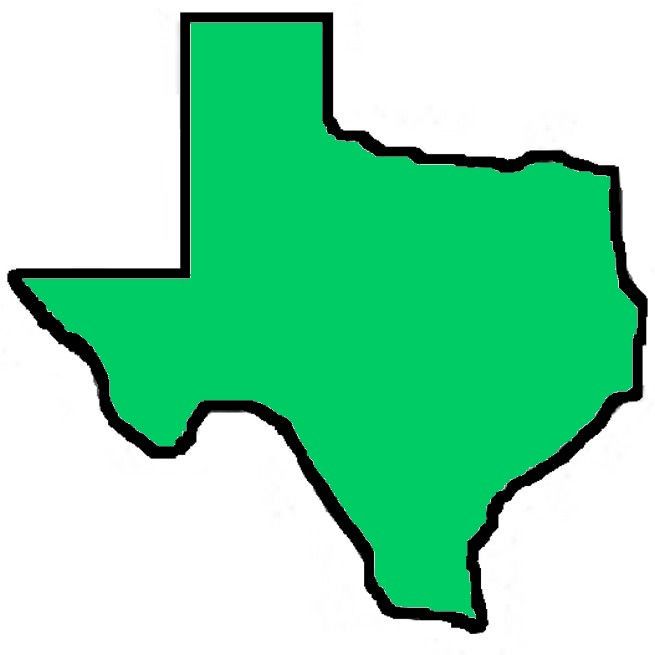
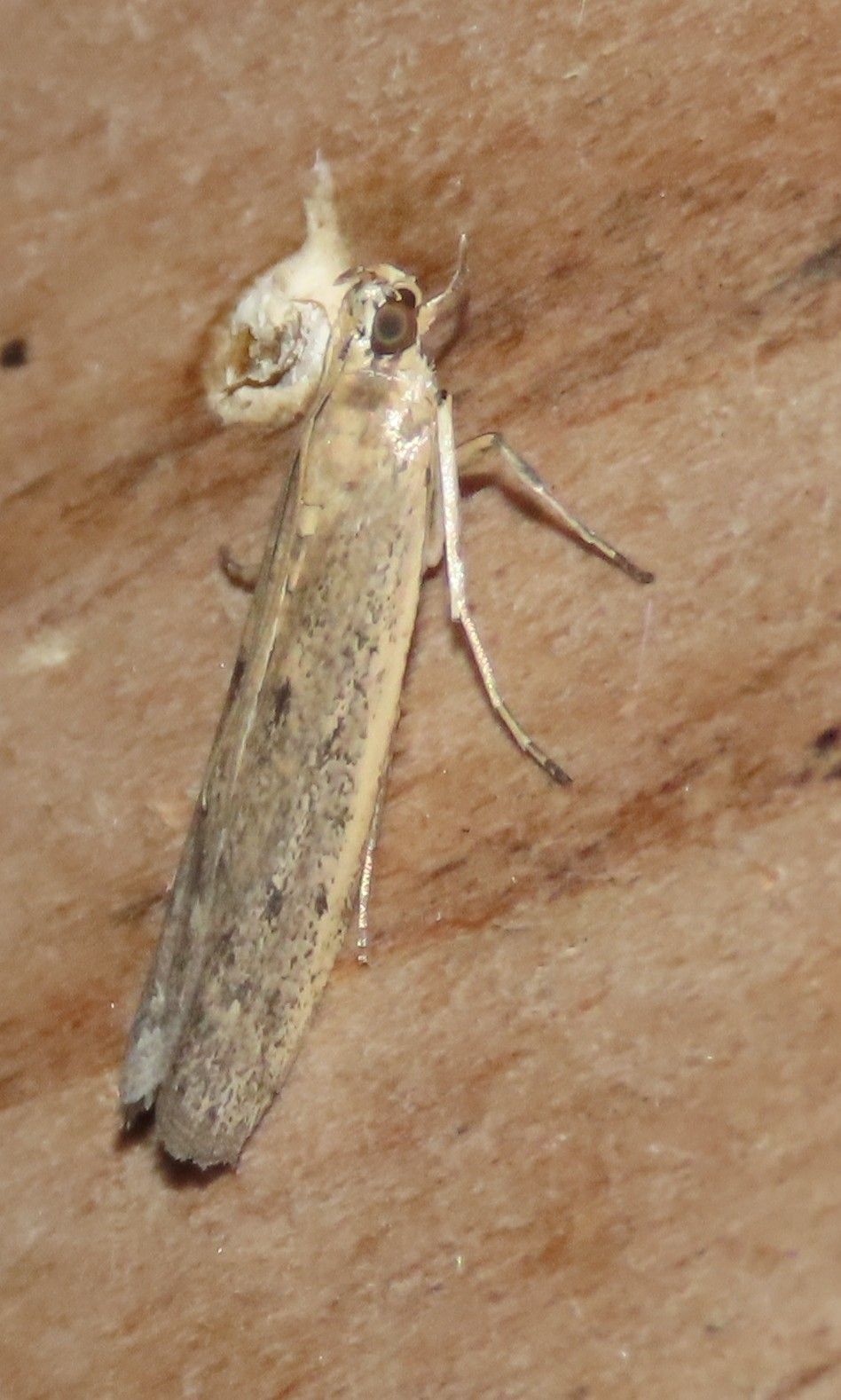
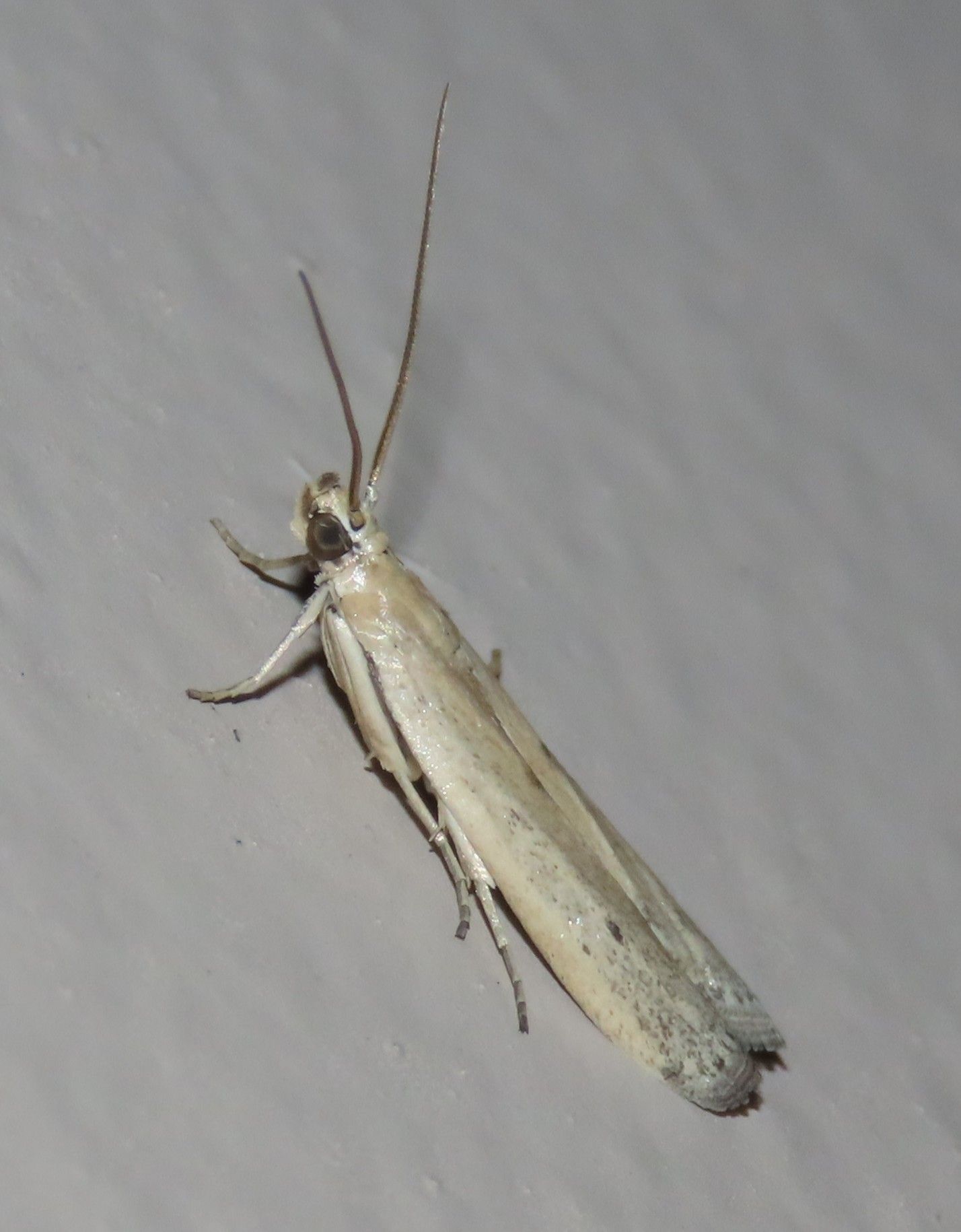
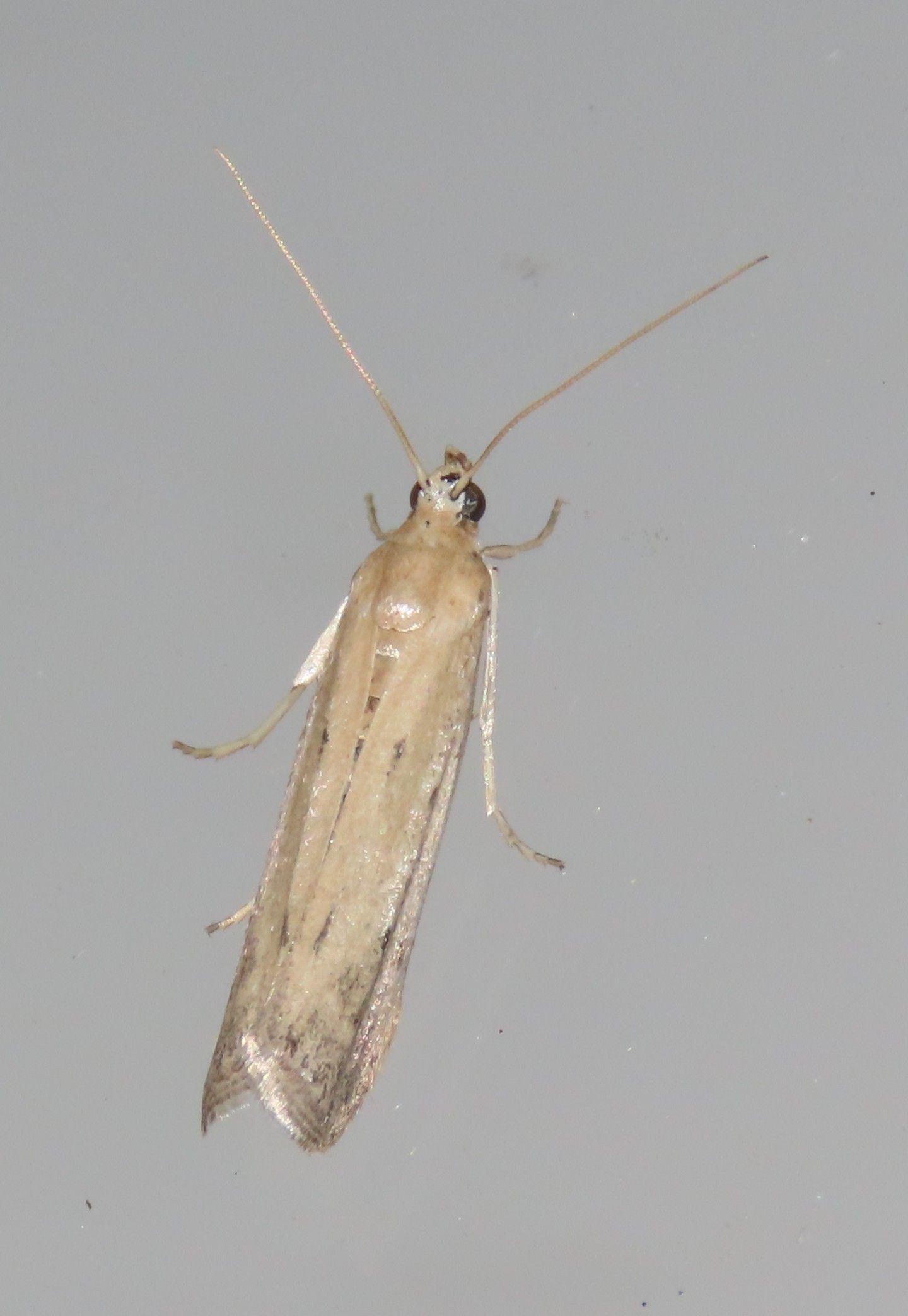
Sunflower Moth (Homoeosoma electella)
Similar to the Lesser Cornstalk Borer in size and shape, this moth has a brindled, pale grayish-buff coloration overall. On darker individuals the pale coloration along the costa is more apparent. Look also for the prominent black streaks on the back and near the subterminal area. Recorded year-round.

Sphinxes

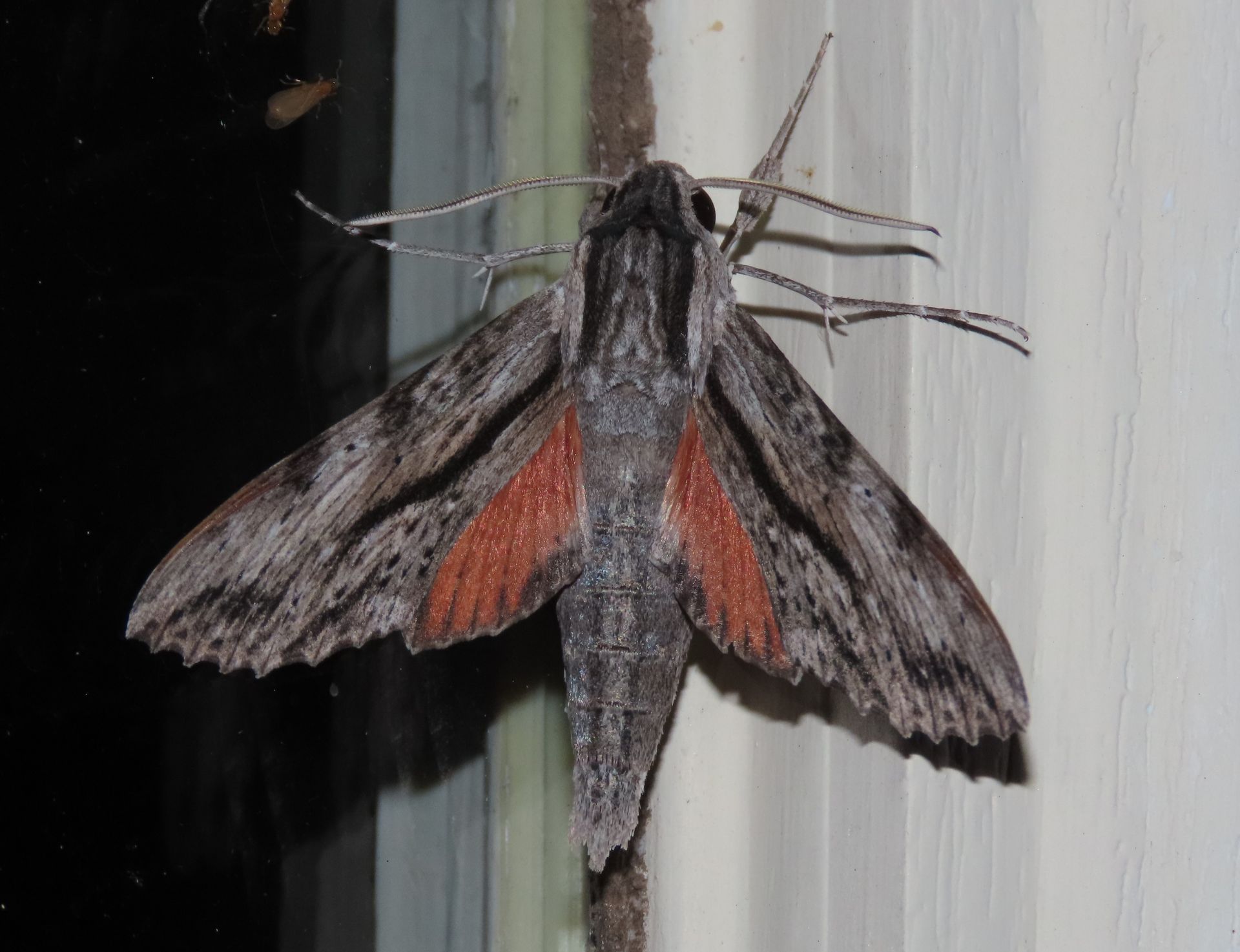
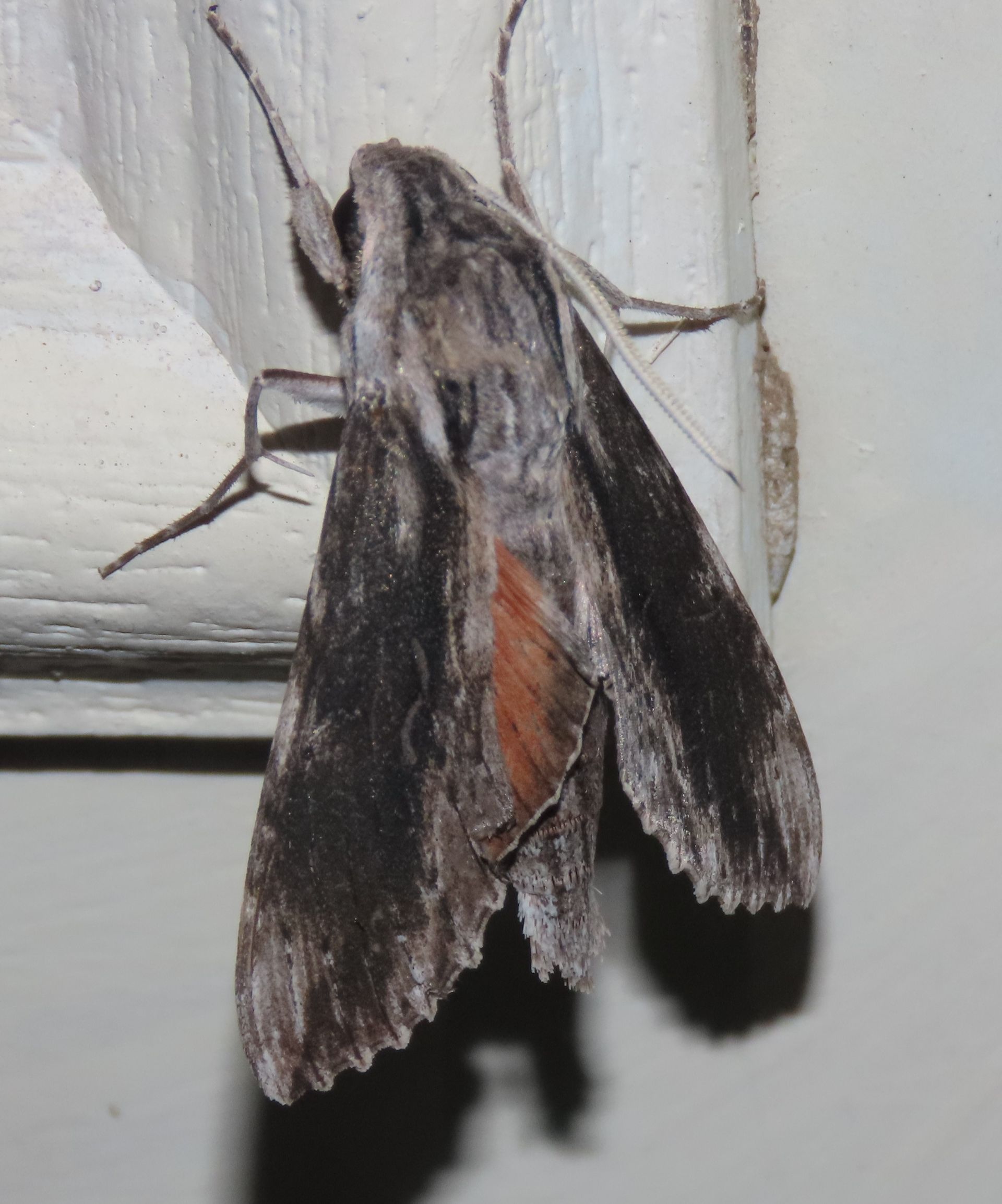
Obscure Sphinx (Erinnyis obscura)
Both sexes are brindled gray (some, like the bug on the right, have a "blackened" appearance), but the male (center) has two long black stripes down the shoulders and wings. Told from the less common and larger Ello Sphinx by its plain thorax. Recorded year-round.

